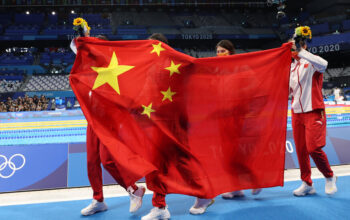More than a month of bluster and posturing, menacing military maneuvers and high-level diplomatic meetings has not made the security crisis gripping Europe any easier to assess.
Just a week after top diplomats from the United States and Russia sat down in Geneva on Jan. 21 to seek a way of de-escalating tensions around Ukraine, the Pentagon warned that Russia had amassed a fighting force large enough to attack its neighbor, a nation of 44 million, on a scale and at a time of its choosing. That could include a full-scale invasion, which would be likely to result in fierce fighting and potentially the worst bloodshed on the continent since the end of World War II.
“You can imagine what that might look like in dense urban areas, along roads and so on and so forth,” said Gen. Mark A. Milley, the chairman of the Joint Chiefs of Staff, said on Friday. “It would be horrific. It would be terrible.”
The U.S. defense secretary, Lloyd J. Austin III, described an array of Russian infantry troops, artillery and rockets assembled at the Ukrainian border, which he said “far and away exceeds what we would typically see them do for exercises.”
The troops are not only at Russia’s border with Ukraine, but also in Belarus.
Britain indicated on Saturday that it would make a new military commitment to NATO to reinforce allies threatened by Russia. The British government, which has more than 900 troops deployed in Estonia, said it was considering a plan to double its troop numbers, as well as to supply Estonia with defensive weapons.
“This package would send a clear message to the Kremlin,” Prime Minister Boris Johnson said in remarks released by 10 Downing Street.
Still, Mr. Austin said, “There is still time and space for diplomacy.”
No one is sure what Mr. Putin’s intentions are, and trying to divine them is at the heart of the uncertainty surrounding the crisis.
His spokesman, Dmitri S. Peskov, told reporters on Monday that Mr. Putin would state his views on the situation “as soon as he determines it to be necessary.”
“I can’t give you an exact date,” Mr. Peskov said.
Mr. Putin has not spoken in public about Ukraine since Dec. 23. During that time, the Biden administration has moved to rally Western nations to demonstrate that the cost of military aggression would be severe and swiftly felt.
Ukraine is not a member of NATO, and member nations are not bound to come to its defense, but the United States has placed 8,500 troops on high alert to be dispatched to Eastern Europe to support allies nervous that Russian aggression might not stop in Ukraine.
The Biden administration has said it will not send troops to fight in Ukraine, but the Pentagon said on Friday that it would do what was needed to ensure the safety of the thousands of Americans in the country.
American officials also announced last week that they were making plans to impose sanctions on some of Russia’s largest financial institutions — penalties that could disrupt Russia’s economy in ways that would go far beyond previous Western actions.
The United States and Germany are also increasing their warnings that natural gas would not flow through a new $11 billion pipeline from Russia to Germany if Russia were to invade Ukraine.
Still, there is concern that Mr. Putin may be willing to pay a high price to bring Ukraine back into what he sees as Russia’s natural sphere of influence.
In July, he wrote a 5,000-word essay expanding on his frequently voiced conviction that Russians and Ukrainians were “one people.”
And at the center of the current maelstrom, President Volodymyr Zelensky of Ukraine sought on Friday to offer the perspective of a nation where conflict is not theoretical, but a daily reality.
About 14,000 people have been killed in the breakaway provinces in eastern Ukraine, Donetsk and Luhansk, where the Ukrainian military has been at war with Russia-backed separatists since 2014.
To speak of war as imminent was both wrong and dangerous, Mr. Zelensky said. It could result in economic and social instability that could itself cause the state to struggle to survive.
“We don’t need panic,” he said.






